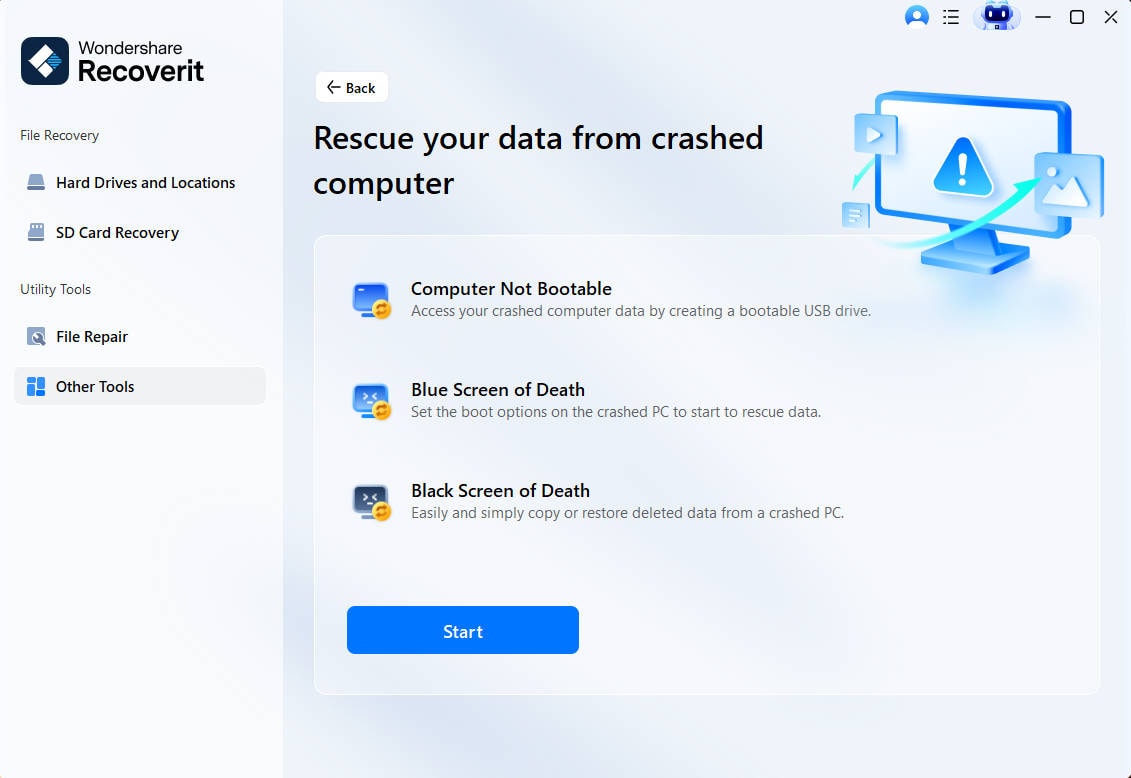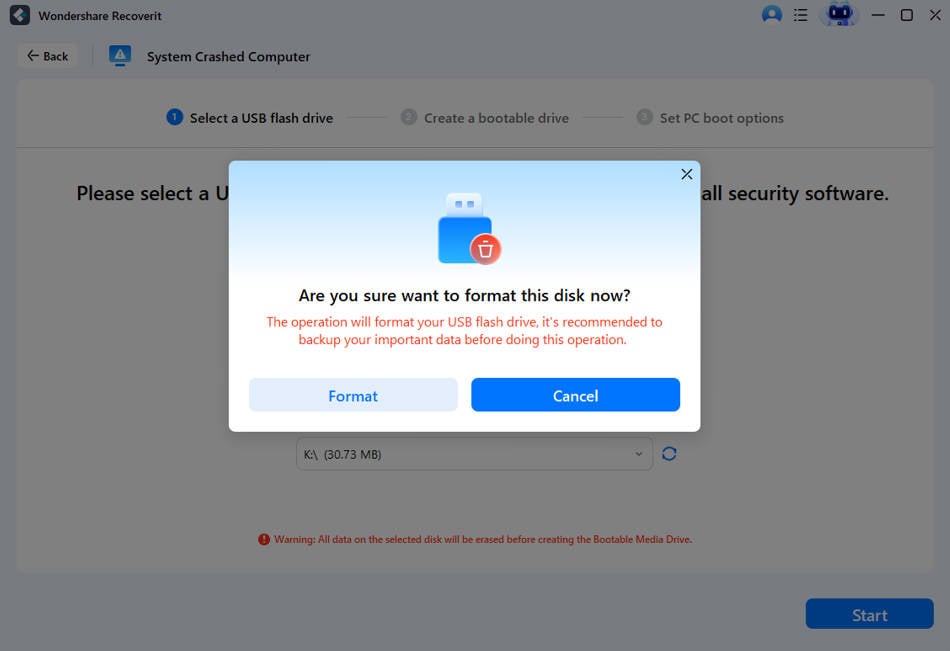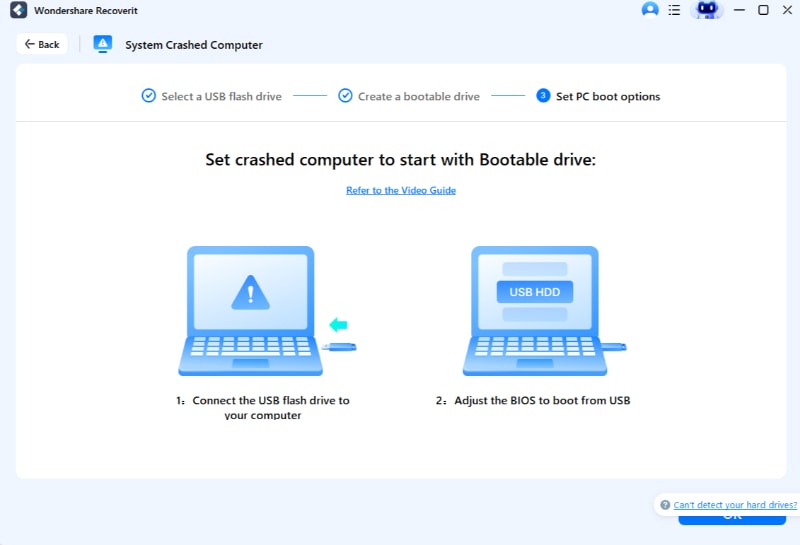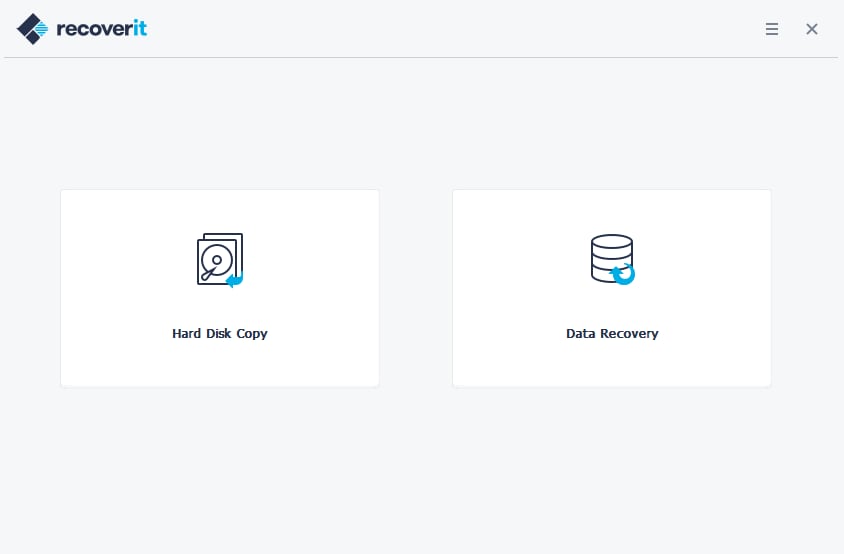This is a common cry for help on tech support forums. If you've ever encountered the dreaded Loading Operating System Stuck message, you know how scary it can be. Your computer won't start, and you're worried about losing all your important data.
But don't panic! In this article, we'll walk you through how to fix loading operating system issue and get your computer up and running again.
In this article
Part 1: What is loading operating system issue?
The Loading Operating System issue message appears when your computer can't find or start the operating system. This can happen for various reasons, such as corrupted system files, a damaged hard drive, operating system not loading or incorrect BIOS settings.
Understanding what is loading the operating system and why it might fail is the first step in solving this problem.
Part 2: Lost Data Due to Loading Operating System Issue? Use Recoverit Today
When you're faced with an error loading operating system, one of your biggest concerns is likely the safety of your data. Family photos, important documents, work files - all of these could be at risk. This is where Recoverit comes in as a potential lifesaver.
Recoverit is a powerful data recovery tool designed specifically for situations like this. Here's why you might want to use Recoverit when dealing with an error loading operating system:
- High Success Rate: Recoverit is very good at getting back lost data, even in situations like computer crashes or startup problems.
- Easy to Use: Even if you're not very good with technology, Recoverit's simple design makes it easy to recover your files.
- Wide Range of File Types: It can recover more than 1000+ different types of files, like documents, photos, videos, and music.
- Safe and Protected: Recoverit works in a way that doesn't change your original files, so you don't have to worry about losing them.
- Preview Before Recovery: You can see what files you can get back before actually recovering them, which saves time and makes sure you get what you want.
- Bootable Recovery: Even if your computer won't turn on, Recoverit has a special feature to help you access your files via “Crashed Computer Recovery” mode.
Now that you understand why Recoverit can be a valuable tool in this situation, let's go through the steps for using it in Crashed Computer Recovery Mode:
Step 1: In Recoverit, select "System Crashed Computer" from the left side of the interface, then click the "Start" button.

Step 2: Use Recoverit to create bootable media and recover data. Ensure a blank USB drive is connected to the working computer and recognized.

Step 3: Select the drive to create bootable media, then click "Create" to start. Note that an alert message about formatting the USB flash drive will pop up, so back up any important data before proceeding.

Step 4: Connect the USB flash drive to your computer. Adjust the BIOS to boot from the USB drive: restart your crashed computer and press the BIOS entry key when the first screen appears (this key may vary by system).

Step 5: After following these steps, your crashed computer should now be bootable. Select Data Recovery.

Remember, when dealing with data recovery, time is of the essence. The sooner you act, the better your chances of successful recovery. Using a tool like Recoverit can help you retrieve your valuable data even when facing an error loading operating system.
Part 3: How to Fix Loading Operating System Issue
Now, let's dive into the various methods to fix the error loading operating system. We'll start with simpler solutions and progress to more advanced ones.
Fix 1: Update BIOS via UEFI Setup
The BIOS (Basic Input/Output System) is the first software that runs when you turn on your computer. It initializes hardware components and hands over control to the operating system. Outdated BIOS can sometimes cause conflicts with newer hardware or software, leading to the error loading operating system.
Updating the BIOS can resolve compatibility issues, improve system stability, and potentially fix errors related to booting your operating system.
Here’s how to Fix the Error Loading Operating System:
Step 1: Restart your computer and enter BIOS/UEFI setup (usually by pressing F2, Del, or Esc during startup). Look for an option to update BIOS or UEFI firmware.

Step 2: Follow the on-screen instructions to download and install the latest BIOS version. Restart your PC.
Updating BIOS can be tricky, so make sure to follow the instructions carefully to avoid further issues.
Fix 2: Rebuild MBR
The Master Boot Record (MBR) is a special boot sector at the beginning of a drive that contains information about the partitions on that drive and helps load the operating system. If the MBR becomes corrupted, your computer may fail to load the operating system.
Rebuilding the MBR can restore the correct boot information, allowing your computer to find and load the operating system properly. This fix is particularly useful if the error is caused by MBR corruption due to malware, improper shutdowns, or disk write errors.
Here’s how to Fix the Error Loading Operating System:
Step 1: Boot from your Windows installation media (USB or DVD). Select Repair your computer instead of Install now.

Step 2: Choose Troubleshoot > Advanced options > Command Prompt.

Step 3: Execute these commands:

bootrec /fixmbr
bootrec /fixboot
bootrec /rebuildbcd
Restart your computer and check if the error is resolved.
Rebuilding MBR can fix many instances of the error loading operating system.
Fix 3: Run the CHKDSK Command
CHKDSK (Check Disk) is a Windows utility that checks the file system and file system metadata of a volume for logical and physical errors. Disk errors can sometimes prevent the operating system from loading properly.
Running CHKDSK can identify and fix various disk-related issues such as bad sectors, lost clusters, or cross-linked files. By repairing these issues, it can restore the integrity of your file system and potentially resolve the error loading operating system.
Here’s how to Fix the Error Loading Operating System:
Step 1: Boot into the Advanced Startup Options menu. Select Troubleshoot > Advanced options > Command Prompt. Type chkdsk C: /f /r and press Enter (replace C: with your system drive letter if different).

Step 2: Wait for the process to complete, then restart your computer.
Running CHKDSK can repair file system errors and bad sectors that might be preventing your operating system from loading.
Fix 4: Set Correct boot order in BIOS
The boot order in BIOS determines the sequence in which your computer looks for bootable devices. If this order is incorrect, your computer might not be able to find the drive containing your operating system.
Setting the correct boot order ensures that your computer attempts to boot from the drive containing your operating system before trying other devices. This can resolve the error loading operating system if it's caused by an incorrect boot sequence.
Here's how to set the correct boot order in BIOS:
Step 1: Restart your computer and enter BIOS setup. Find the Boot or Boot Order section. Make sure your hard drive with the operating system is set as the first boot device.

Step 2: Save changes and exit BIOS. Restart your computer and check if the error is resolved.
Setting the correct boot order in BIOS ensures that your computer tries to load the operating system from the right device.
Fix 5: Reinstall The Operating System
Sometimes, the operating system files may become severely corrupted or damaged to the point where simpler fixes don't work. In such cases, reinstalling the operating system might be the only solution.
Reinstalling the operating system replaces all system files with fresh, uncorrupted copies. This can resolve persistent errors that are caused by damaged system files or registry entries.
Here's how to do it:
Step 1: Back up your important data if possible. Create a bootable USB drive with your operating system installation files.

Step 2: Boot from the USB drive and follow the installation prompts. Choose "Custom install" and select your system drive. Complete the installation process and set up your system.
Reinstalling the operating system can resolve persistent error loading operating system issues, but remember to back up your data first!
Part 4: Tips to Prevent Data Loss Due to Error Loading Operating System Issue
Here are some tips to help prevent data loss due to loading operating system stuck or operating system not loading:
- Regularly back up your important files to an external drive or cloud storage.
- Keep your operating system and drivers up to date.
- Use a reliable antivirus program to prevent malware infections.
- Avoid sudden shutdowns or power losses by using a UPS (Uninterruptible Power Supply).
- Perform regular disk checks and defragmentation to maintain your hard drive's health.
By following these tips, you can minimize the risk of encountering the error loading operating system and protect your valuable data.
Video Tutorial: How to Fix Computer Stuck at BIOS Screen?
Conclusion
Encountering an loading operating system issue can be a stressful experience, but with the right knowledge and tools, you can often resolve the issue and recover your data. We've covered various methods to fix the error, from updating BIOS via UEFI Setup to rebuilding MBR and even reinstalling the operating system.
Remember, if you're not confident in performing these fixes yourself, it's always best to consult with a professional technician. They can help solve the error loading in an operating system while minimizing the risk of data loss.
FAQ
-
Q1: Can I prevent the Loading Operating System Issue from happening?
While you can't completely prevent the error loading operating system, you can reduce its likelihood by keeping your system updated, using reliable hardware, and avoiding sudden shutdowns. Regular backups are also crucial to protect your data in case this error occurs. -
Q2: Will I lose all my data if My Operating System is Not Loading?
Not necessarily. Many of the fixes we've discussed, such as updating BIOS or rebuilding MBR, don't affect your personal files. However, there's always a risk of data loss when dealing with system errors, which is why regular backups are so important. -
Q3: How long does it take to fix the "Error Loading Operating System" issue?
The time it takes to fix the error loading operating system varies depending on the cause and the solution. Simple fixes like changing the boot order in BIOS might take just a few minutes, while more complex solutions like running CHKDSK or reinstalling the operating system could take several hours.



 <
< ChatGPT
ChatGPT
 Perplexity
Perplexity
 Google AI Mode
Google AI Mode
 Grok
Grok























